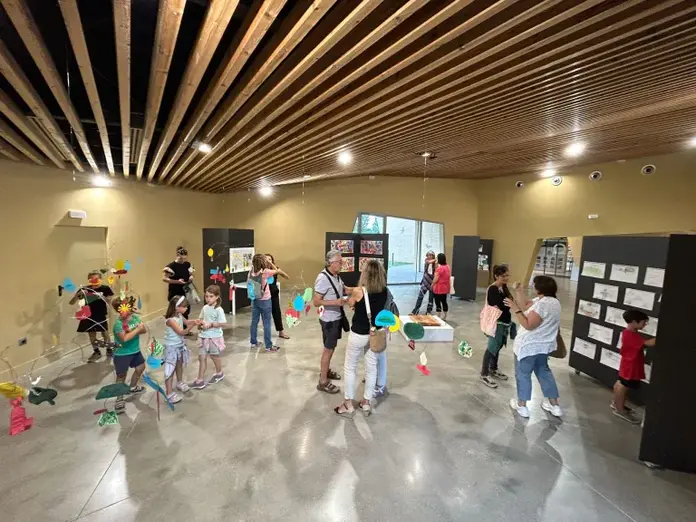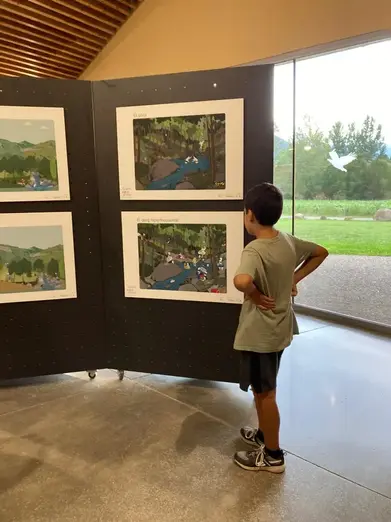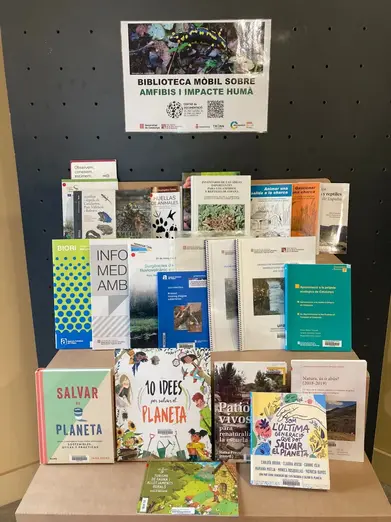Amphibians Project

Water and Amphibians in the Gurn: Biodiversity and Fragility
-----
This is an education and awareness project focused on the conservation of the natural heritage and biodiversity of Vall d’en Bas (La Garrotxa).


The CST has long collaborated with different social actors in the Vall d’en Bas area. As a result, there is a stewardship agreement with the Vall d’en Bas Town Council. This agreement covers the Emprius area, through which the Gurn River flows, and it is also where most of the activities included in this project take place.
The area has several protection designations:
-
Natural Interest Area of the Milany-Santa Magdalena and Puigsacalm-Bellmunt ranges
-
Natura 2000 Network (XN2000)
-
Special Conservation Area (ZEC)
-
Special Protection Area for Birds (ZEPA) of the "Catalan Transversal System" (ES5110005).
The Gurn River is also part of the XN2000 as an independent unit.
In a context of climate emergency, aquatic ecosystems are crucial for the sustainability of life. Streams, rivers, and springs perform various functions beyond the ecological. Amphibians are the group of tetrapods characteristic of continental water bodies and are also the most threatened vertebrates in Catalonia due to habitat loss, emerging infectious diseases, the introduction of invasive exotic species, and pollution.
One of the main issues in Vall d’en Bas is its growing overuse. The local community and the Town Council are aware of the need to regulate the area but, more importantly, to disseminate information and raise awareness about its richness. This project focuses on establishing this connection with the population and creating a network of activities and interactions that has now been ongoing for four years. By involving different people from the area in the conservation of natural spaces like this one, the project puts the Sustainability Circles into practice.
Activities done:
Depending on the target audience, various activities have been carried out, including:
Public Schools:
-
The participating schools are La Bòbila (Les Preses) and Verntallat (La Vall d’en Bas).
-
The activities conducted with students reflect on our habits and the relationship we maintain with natural heritage and biodiversity. These activities include:
-
Classroom workshops
-
Workshop field trips
-
Two participatory exhibitions (2021 and 2023) held at the Can Trona Nature and Culture Center (La Vall d’en Bas). In the 2023 exhibition, students from the initial and upper cycles reflected on their learning about fragility, human presence and attitudes, and toxic and harmful elements to the ecosystem through interactive artistic proposals.
-
Neighborhood Associations (AAVV) and Local Population of Vall d’en Bas:
-
Neighborhood groups that participated include Sant Privat d’en Bas, Les Olletes, Veïnat Cirera, Verntallat, and Veïnat Nou. The activities developed include:
-
Night outings for wildlife observation and learning about natural heritage
-
Outings for species listening and identification
-
Workshop for restoring a temporary pond as a refuge for amphibians
-
-
During all the workshop field trips aimed at the local public, participants were encouraged to contribute materials and content such as documents, old photographs, etc., that provide information about the area, its changes, or anecdotes. These materials were also included in the organized participatory exhibitions.
Materials:
Datasheets from the Catalan Herpetological Society consulted for creating the project materials:
-
Salamander (Salamandra salamandra)
-
Pyrenean Newt (Calotriton asper) and Montseny Newt (Calotriton arnoldi)
-
Marbled Newt (Triturus marmoratus)
-
Palmate Newt (Lissotriton helveticus)
-
Common Midwife Toad (Alytes obstetricans)
-
Painted Frog (Discoglossus pictus)
-
Parsley Frog (Pelodytes punctatus)
-
Common Toad (Bufo spinosus)
-
Natterjack Toad (Epidalea calamita)
-
Mediterranean Tree Frog (Hyla meridionalis)
-
Common Frog (Rana temporaria)
-
Iberian Green Frog (Pelophylax perezi) and Graf's Hybrid Frog (Pelophylax kl. grafi)
Supporting Materials for Workshops and Workshop Field Trips:
Panels:
Field notebooks:
Temporal scope:
2020-present
CST team:
Mireia Jiménez
Support:

Collaboration:


.png)






